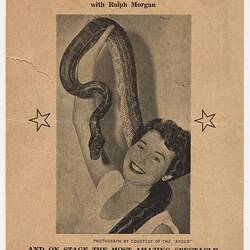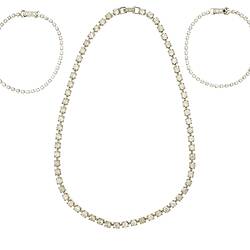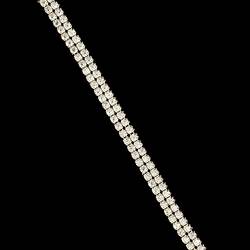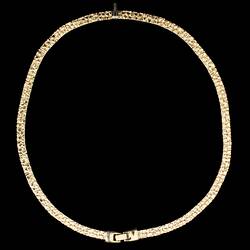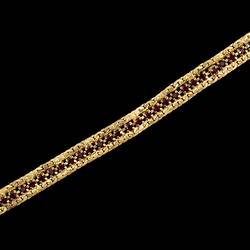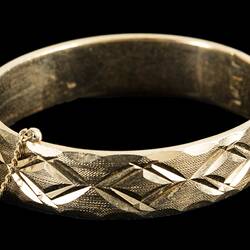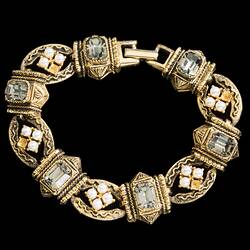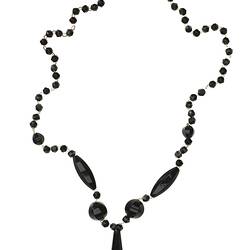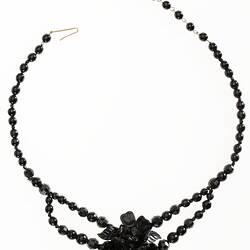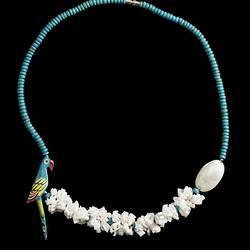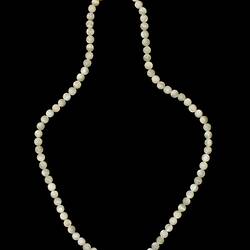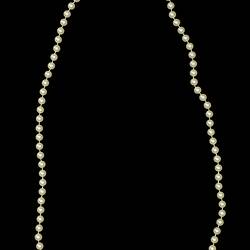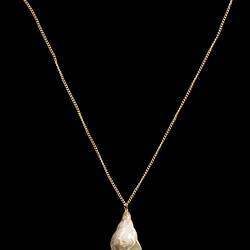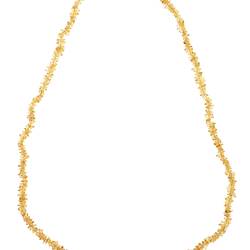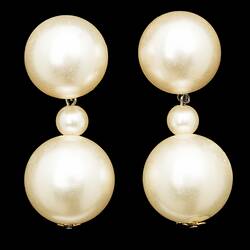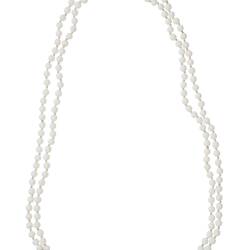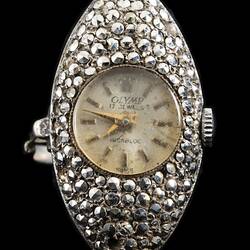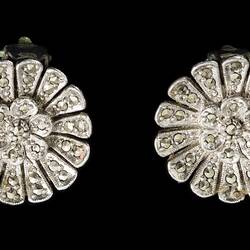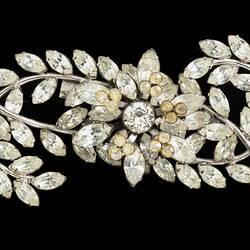Early Life:
Bernice Kopple was born in Glasgow, Scotland in 1930 and migrated to Melbourne onboard the ship New Australia in 1950. She was nineteen years old and travelled alone, her mother and three siblings following later. Bernice had won five beauty pageants in Scotland and was crowned Miss New Australia during the voyage, and went on to be Miss Torquay at the Sun Beach girl contest in Torquay, Victoria, 1951. These activities led to modelling and show businesses opportunities but her passionate interest in animals led to her work as both an animal handler and a notable career as a 'snake dancer.'
Working Life:
Bernice was employed as a receptionist and learned python snake-handling for public performances at the Koala Park in Adelaide. Throughout the 1950s and 1960s Bernice worked as a model, entertainer, showgirl and animal handler on entertainment circuits around Australia and New Zealand. She was a 'Nudie' in the Folies Bergere and joined the Tivoli circuit. As public nudity debates accelerated, Bernice modelled bikinis for 'Prudence Jane', a Melbourne firm introducing the bikini to Australia and became a focus for the public moral outrage, particularly in 'The Australasian Post'.
Bernice was simultaneously pursuing her passion for animals as a keeper at the Melbourne Zoo, lecturing on wildlife in schools and on television and developing her snake act in theatres, clubs, tent shows and drive-in cinemas. At this time, Bernice was partnered both personally and professionally with pianist Frank Appleton, an arrangement which concluded in the 1970s. Bernice was engaged twice but never married.
In the 1970s, Bernice moved from Melbourne to Adelaide and worked as a mature model for daywear, bikinis and lingerie. She toured Australia with her dog and caravan, cultivating her reputation as a modern, independent woman, mustering, cooking and jillarooing in the Northern Territory and becoming manager at the Cairns Oceanarium.
During the 1980s and 1990s, Bernice continued with modelling work and animal care in Adelaide until 2002 when she moved to a nursing home in Castlemaine in central Victoria. Her love of animals continued through her involvement with the RSPCA.
Bernice Kopple died in 2011 but is always remembered for her energy, beauty, wit and pride in her Scottish heritage.
An Unconventional Woman:
In Australia in the 1950s women were expected to marry, have children and lead primarily domestic lives. Bernice chose to remain unmarried, she travelled all over Australia and had multiple and varied jobs - in many ways she busts every conventional image of a post-war female migrant. Bernice might not be everybody's poster girl for the women's movement. In some ways she was conforming to popular images of female sexuality. But she also defied conventions - independent, adventurous and confident.
Memories From a Close Friend, Peter Legge, 2017:
"Now Bernice really liked the idea of the adventure and I suppose also it was a cheap mode of travel at the time. She won the Miss New Australia beauty pageant on board the New Australia and when she arrived in Melbourne she won the beauty contest which was called Miss Torquay.
As a result of that she was offered a job in Adelaide at the Koala Park to start with, in the office. And then that expanded because they offered her the job of being the snake handler. She had never ever touched a snake before in her life but it was an adventure and she made a big success of it.
After that well she was a show girl. She worked in the Follies Bergere. After being a show girl she did lots and lots of work for magazines. Pix Post magazines very popular in the 50s and 60s. She knew the power of beauty.
She worked her own act with the snakes, well the snakes came back into her life I suppose. She was really, really, amazing with animals. An exotic dancer was what she was and her gimmick was the snakes, and you know the whole thing was sexy and erotic and very fluid and lots of movement you know.
I would imagine then she had her accompanist too, Frank Appleby who was also her boyfriend.
She made all the costumes herself. She went to the op shops and got the various bits and pieces that were going to be sewed together. They could be fairly spectacular and look pretty spectacular when they was on too! With the costumes there was this Scottish angle and the Arabian angle. She used her Scottishness in her act. Bernice had a very thick Scottish accent, Glaswegian, and she never lost it.
She had her own accommodation, she always had her own camper van and she did jillarooing and herd mustering in the Northern Territory. And in Queensland she worked as a shearer's cook and I would imagine that was brief because she was a terrible cook!
I think she was fairly unusual in that generation because she didn't marry and didn't have children and it was an unconventional life and (laughs) there was nothing conventional about her. Bernice wholeheartedly took what she could from Australia and gave back as well. But it was the openness, the space, all those things, so different than in Scotland, and it was never confined and I don't think she could've done that in the same way in Scotland."
(edited transcript from an interview with Peter Legge for the 'British Migrants: Instant Australians? exhibition (developed by Museums Victoria for Immigration Museum, Melbourne, Dec 2017-2018; toured to Migration Museum Adelaide, 2020)
More Information
-
Keywords
Migration & Settlement, Entertainers, feminism, women's clothing & accessories, women, Women's Movement, Women's Clothing Accessories, Women's Travel, Women's Role, Women's Clothing, Women's Issues, Women's Work, Women's Liberation, Rural Women, animal shelters, animal trainers, Animal Shows
-
Authors
-
Article types


